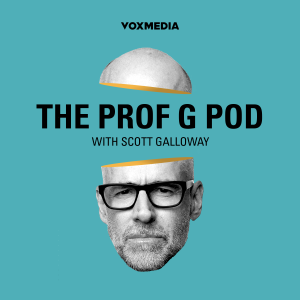

This briefing document summarizes the key arguments, concepts, and practical advice presented in the provided excerpts from Cameron Herold's book, "Meetings Suck," focusing on transforming unproductive meetings into valuable business tools.
Key Themes:
- Meetings Don't Inherently Suck, People Do: The central premise is that the problem isn't meetings themselves, but how they are run and attended. "It’s Not the Meetings…It’s US!"
- Meetings as a Critical Business Tool: When executed correctly, meetings are essential for driving alignment, providing direction, generating energy, fostering focus, sparking creativity, and inspiring employees.
- The Financial Cost of Poor Meetings: Unproductive meetings are a significant waste of company resources and money.
- Importance of Structure and Preparation: Effective meetings require clear agendas, defined purposes, and anticipated outcomes, distributed in advance. "No agenda, no attenda!"
- Time Management is Crucial: Compressing meeting times, starting and ending on time, and valuing everyone's time are fundamental to productive meetings.
- Understanding and Leveraging Personalities: Recognizing different personality types (Dominant, Expressive, Analytical, Amiable) and their impact on meeting dynamics is vital for inclusive and effective discussions.
- Strategic Meeting Cadence: Implementing a structured rhythm of different meeting types (daily, weekly, quarterly, yearly) is essential for organizational health and growth.
- Transparency and Financial Literacy: Sharing financial information and involving employees in understanding the business's financial health is empowering and drives better decision-making.
- Empowering Employees: Creating an environment where all employees, regardless of rank, feel safe to share ideas and opinions leads to greater confidence and innovation.
Most Important Ideas and Facts:
- The Goal of Effective Meetings: Herold argues that well-run meetings can "drive alignment within the business; give direction; generate energy, focus, and creativity; and inspire your people to elevate the business to the next level." Conversely, poorly run meetings result in "none of that happens."
- The Financial Impact of Waste: Herold uses a powerful analogy: "imagine that everyone who shows up represents fifty dollars." He calculates that inviting just two unnecessary people to a daily meeting costs $25,000 a year, emphasizing the significant financial waste of unproductive meetings.
- The "Two-Pizza Rule": Borrowing from Jeff Bezos, Herold suggests, "he would never hold a meeting in which two pizzas couldn’t feed the entire group." This serves as a practical guideline for limiting meeting size to maintain focus and efficiency.
- The Importance of Opting Out (Respectfully): Herold advocates for employees having the freedom to "opt out" of meetings where they feel they cannot provide or receive value, provided they do so respectfully and explain their reasoning.
- Agenda Must-Haves: A clear agenda distributed in advance is mandatory. Key elements include:
- Purpose (one sentence explaining why the meeting is happening).
- Possible Outcomes (up to three anticipated results).
- Time Allocation per topic.
- Ideally, a To-Do list of preparatory tasks for attendees.
- Three Meeting Styles: Herold identifies three distinct styles for agenda items, each requiring different preparation and interaction:
- Information Sharing: Simply conveying information. Should often be replaced by memos.
- Creative Discussion: Brainstorming and generating ideas without immediate decision-making.
- Consensus Decision: Group decision-making where everyone's voice is heard and a unified decision is reached. Herold emphasizes the importance of understanding the style beforehand to avoid frustration.
- The Philosophy of Being On Time: Punctuality is framed as a reflection of respect. Herold's rule is that "To be on time is to arrive five minutes early." He recounts a personal anecdote from teaching at MIT where attendees were expected to be in their seats when the session started, emphasizing the importance of setting this expectation.
- Compressing Time: Applying Parkinson's Law ("Work expands so as to fill the time available for its completion"), Herold advises estimating meeting times and then cutting them in half to increase productivity and efficiency.
- Soliciting Ideas from Quieter Personalities: To ensure all voices are heard, especially from Analytical and Amiable personalities who may be less vocal, Herold recommends calling on junior or quieter individuals first before the more dominant or senior attendees. This builds confidence and allows for a wider range of ideas.
- Structured Meeting Rhythms: The excerpts outline various essential meeting types and their recommended frequency and duration:
- Daily Huddle: Short (7 minutes for the whole company or 3 minutes for business areas via Adrenaline Meetings), twice daily, information sharing, focused on daily priorities and metrics.
- Weekly Action Review (WAR) Meeting: Weekly, 60-90 minutes, focuses on reviewing goals, metrics, and plans, holding individuals accountable. "everyone commits to his or her goals in front of everyone else."
- Weekly Strategy Meeting: Weekly, 60-90 minutes, combines information sharing and creative discussion, reviewing key metrics and providing business area updates.
- Monthly Financial Meetings: Monthly, focuses on reviewing financial statements, identifying savings, and discussing revenue generation. Provides transparency and financial education.
- Quarterly Retreats: Full or half-day, off-site, focuses on reviewing the past quarter and planning for the next, aligning with the Vivid Vision.
- Yearly Retreats: Typically two days, off-site, involves strategic planning for the next three years, reviewing core values, purpose, and the Vivid Vision. Includes team-building activities like discussing personal "101 dream goals."
- Ad Hoc Debrief Meetings: Quick (5-10 minutes), informal, debriefing on projects, calls, or events.
- The Vivid Vision: A three-year strategic planning tool where the CEO vividly describes every aspect of the company in the future, including customer feedback, media coverage, employee sentiment, and financial status. This serves as a guiding light for strategic planning and goal setting in annual and quarterly meetings.
- Benefits of Financial Transparency: Sharing financial statements with employees, even frontline staff, fosters trust, encourages ideas for cost savings and revenue generation, and educates the team on business finance. Herold shares an anecdote about a wealthy CEO who gained employee respect by being transparent about his finances.
- The Role of the "Closer": A designated person at the end of each agenda item or meeting to summarize decisions made, actions agreed upon, and deadlines. This ensures clarity and prevents misunderstandings. "clarity arises when the Closer asks people to reiterate what they’ve agreed to do and when."
- Virtual Meetings: Herold acknowledges the utility of virtual meetings but emphasizes the importance of video conferencing for visual engagement and leveraging collaborative tools like Google Docs.
Conclusion:
These excerpts from "Meetings Suck" strongly advocate for a fundamental shift in how organizations approach meetings. Herold provides a practical and detailed framework for transforming meetings from time-wasting events into powerful engines for communication, alignment, strategic execution, and employee empowerment. His emphasis on preparation, clear objectives, time discipline, personality awareness, and a structured meeting rhythm offers actionable steps for leaders and employees alike to improve meeting effectiveness and contribute to overall business success. The core message is clear: by implementing specific strategies and fostering a culture of respect for time and ideas, companies can elevate their meetings and, consequently, their performance.
RYT Podcast is a passion product of Tyler Smith, an EOS Implementer (more at IssueSolving.com). All Podcasts are derivative works created by AI from publicly available sources. Copyright 2025 All Rights Reserved.More Episodes
All Episodes>>Create Your Podcast In Minutes
- Full-featured podcast site
- Unlimited storage and bandwidth
- Comprehensive podcast stats
- Distribute to Apple Podcasts, Spotify, and more
- Make money with your podcast











